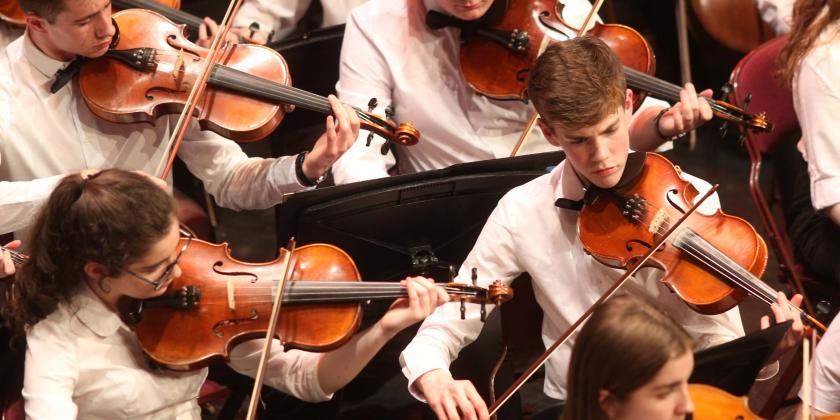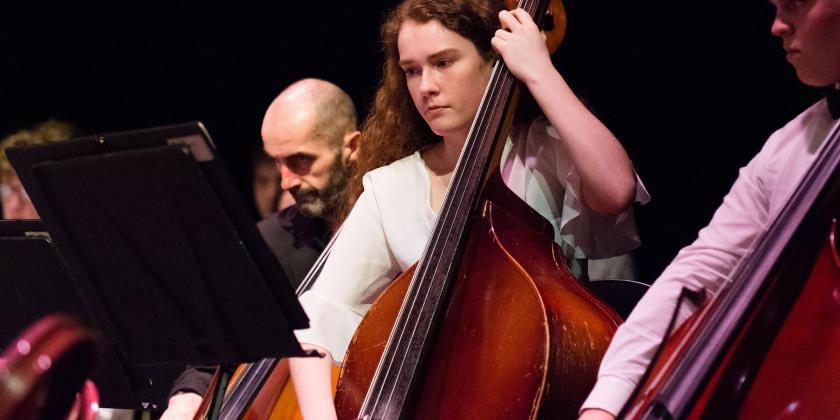The string family of instruments include the violin, viola, violoncello (or cello), and double bass; these instruments resemble each other in appearance and method of producing a characteristic sound.
The bodies of the string instruments, which are hollow inside to allow sound to vibrate within them, are made of different kinds of wood, but the part of the instrument that makes the sound is the strings, which are made of nylon, steel or sometimes gut. The strings are played most often by drawing a bow across them. The handle of the bow is made of wood and the strings of the bow are actually horsehair from horses' tails! Sometimes the musicians will use their fingers to pluck the strings, and occasionally they will turn the bow upside down and play the strings with the wooden handle.
The string family that plays in an orchestra is made up of violin, viola, cello, double bass, and harp, but there are many other string instruments, including guitar and ukulele.




